Not everything we try in the garden, works. In fact, a lot of what we try, doesn't work to its full potential. But as David likes to say, "we're doing the right things, we just have to do more of it." So autumn is the best time to see how the garden performed, against our well intentioned, efforts. So what did we do?
August 2015
Back in late winter, I resurrected our old vegetable beds, which hadn't been managed for several years. I created four new growing beds to plant out. August was a busy month, because I also made a new sweet potato bed, away from the main vegetable area, they were attempting to dominate.
The sweet potato bed was a failure, because we didn't get the rain that would fill the swale next to it. We also had ground, around the bed, fully exposed to the sun. Moisture was quickly sucked out through evaporation. It was just another reminder, gardens work best with many functioning parts. Some parts, landscape water storage, some parts water retention strategies. Other parts, climate modifiers by the use of foliage cover.
We had one part right - the landscape water storage, via swale. But it failed when the rain didn't arrive, to fill it. In the end, it was just a huge sponge, sucking water I could cart by hand, to keep things alive. When I got busy elsewhere, our sweet potato bed, went into decline. If I know sweet potato though, it may well bounce back, next rainy season - but it won't be feeding us this season.
Mid September 2015
The next job we completed in spring though, was the raised bed, built, around the newly renovated, Hilltop chicken coop. It was designed for several purposes. To grow strong scented plants, to deter pests: to grow greens I could pick for the chickens; and to create a screen to help block the Western sun in the afternoon.
The choko I planted, died. But we successfully grew Sunflowers and a a few beans up their stalks. I collected the seeds and will plant more, next year. We ate a few beans, like maybe 10 in total.
Sunflowers, as a living trellis for beans
Mostly, we grew tall grass, really well though. Which helped shield the chicken run from the weather extremes, in the end. The kale I planted, fed the chickens, until the heat of summer, and lack of rain, made them too tough to eat. We got some tomatoes, which I threw into the chicken coop - a delightful (if infrequent) treat for them. And several spaghetti squash grew, which were enjoyed by us. I saved seed for next year too!
But it was not enough to say, this production area was successful. Saving seed is great and all, but we really needed to eat from the fruit of it. It gave us some things, just not enough of what we needed. And this bed, also went into decline, without regular watering and the heat of summer.
Vegetable production, early October 2015
How did the vegetable garden perform over the growing season, though? Well, it took off with Spring and the warmer soil, which gave us some delicious treats to eat from the garden. The guinea pigs were fat and the chickens happy, with what I could throw in too. I was thrilled with how everything was growing. It made the effort, to water daily by watering can, worth it.
Yacon growing (centre) late October 2015
If the truth be told, it was a milder spring and summer, temperature wise though. We had many overcast days, which helped keep things a little cooler. I suspect if this hadn't been the case, my manual cans of water, may not have been enough to keep everything hydrated. So the weather worked in our favour, at the start.
Harvesting ~ November 2015
By early November, we were starting to see some harvests. We were never overwhelmed at any point, but it was enough to feel the difference between store bought and home grown. I was looking for ways to use our scarce offerings in our meals, rather than have them go to waste. That's what happens when you spend the time nurturing a crop. You want to see everything used. Plus they taste better than anything you can buy.
Finished retaining wall ~ February 2016
As the vegetable garden chugged along, in November, through to December, we were busy erecting a new retaining wall, opposite it. This was intended to expand our growing area, as the soil and passionfruit vines above, were constantly threatening the crops underneath. We hadn't used the area for growing vegetables in a long time, because of this constant invasion.
Now we could look forward to planting something underneath. What format would we settle upon though, when I didn't want to compromise the footings of the wall? More on what we came up with, at the end.
Christmas 2015
I was delighted, for Christmas lunch, however, to be able to make a peasant loaf, with fresh tomato and basil, picked from our garden. It truly felt like a luxury to have fresh food available, thanks to all our efforts. While we hadn't managed to harvest a lot from our garden (I keep repeating this) it was still memorable enough, to keep wanting to do more.
But then things changed in the garden, by mid summer. Between January and February, David left for five weeks, to boot camp. Where he would become...
March 2016
...A Private in the Queensland regiment of the Australian Defence Force. During his sustained absence however, it meant all the running of the property and our dependents, fell to me. It meant our garden, filled with so much promise at the start, stopped being watered by hand. I tried to keep up with the task, but I was quickly inundated by the rest of my responsibilities.
Those remaining months of summer were not kind to the vegetable growing areas. We didn't get much rainfall either. And it has been mostly dry all the way, into autumn too. Little showers, here and there, but not our usual amount to soak the soil properly. So my vegetable growing area, went from looking like this...
Main vegetable beds ~ February 2016
...to eventually, looking like this, today. Notice the difference in the grass, on the pathway, when the rain vacates for a sustained period of time?
Main vegetable beds ~ May 2016
It goes to show, two very important things. Firstly, we were on the right track with starting the vegetable growing areas, we just weren't able to keep up momentum. Had we been able to, the garden would have severed us well and yielded more. Secondly however, and more telling is, it demonstrated how utterly dependent our growing systems are, upon us.
Which is why David and I are going to develop a new growing system, away from our existing vegetable patch. One that harnesses the natural forces which enter our property, and use it to our advantage. More on that later though. We're just getting the ball rolling, as autumn and winter are prime months for physical labour.
We aren't leaving the existing vegetable area, though. It will receive some upgrades. Especially, when we went to all that trouble, building a new retaining wall. We had something in mind, which shouldn't compromise the wall footings, and will actually improve the watering situation.
May 2016
We are building a series of Wicking beds. Because a can of water, received straight to the base of the plants, via the wicking bed system, won't have to contend with surface evaporation. This is especially important in summer. But more on our wicking beds, in another post. They deserve their relevant details expanded upon, rather than glossed over.
What David and I learned, after assessing our end of growing seasons notes, however, is that we need a more strategic approach. One which doesn't rely completely on the weather, or completely on man made systems. We actually need both, with many different variations in between.
Might I also add, we need imagination during this process too. It keeps our minds engaged, with exploring what's still possible, rather than focusing on negative feedback from what has failed. I can see the success we had at growing seeds for saving, and the small windows of production for us and our animals to eat - but it showed shortcomings, when tested. It makes sense to diversify and try different things.
I look forward to sharing our new developments, as they eventuate.

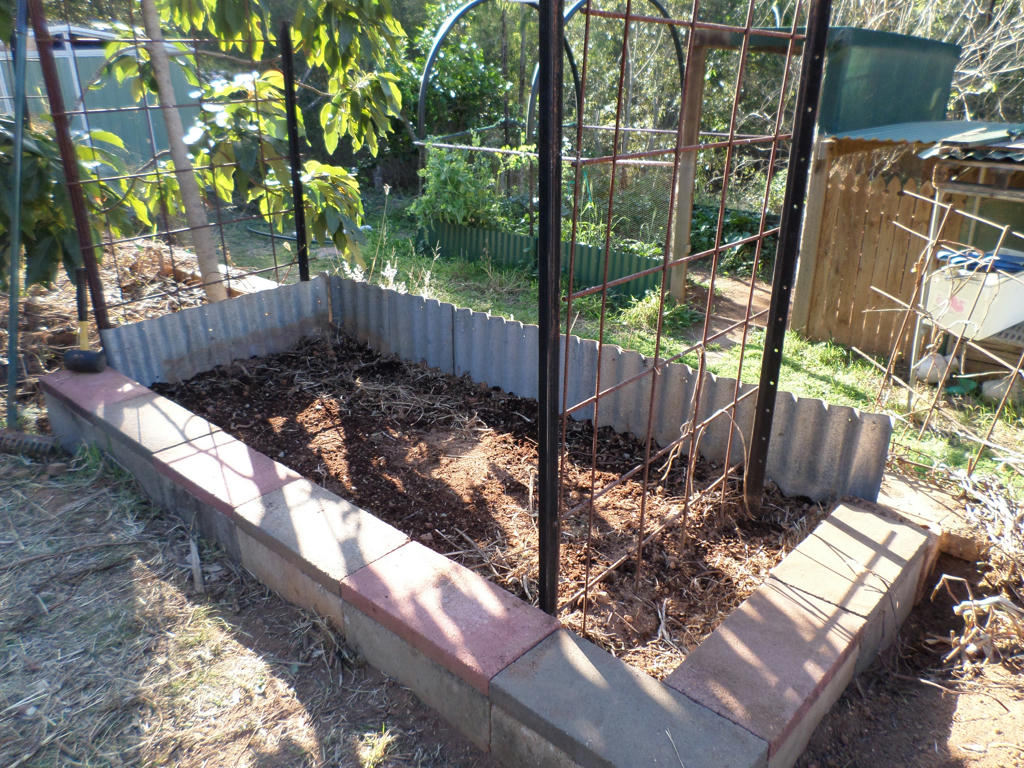
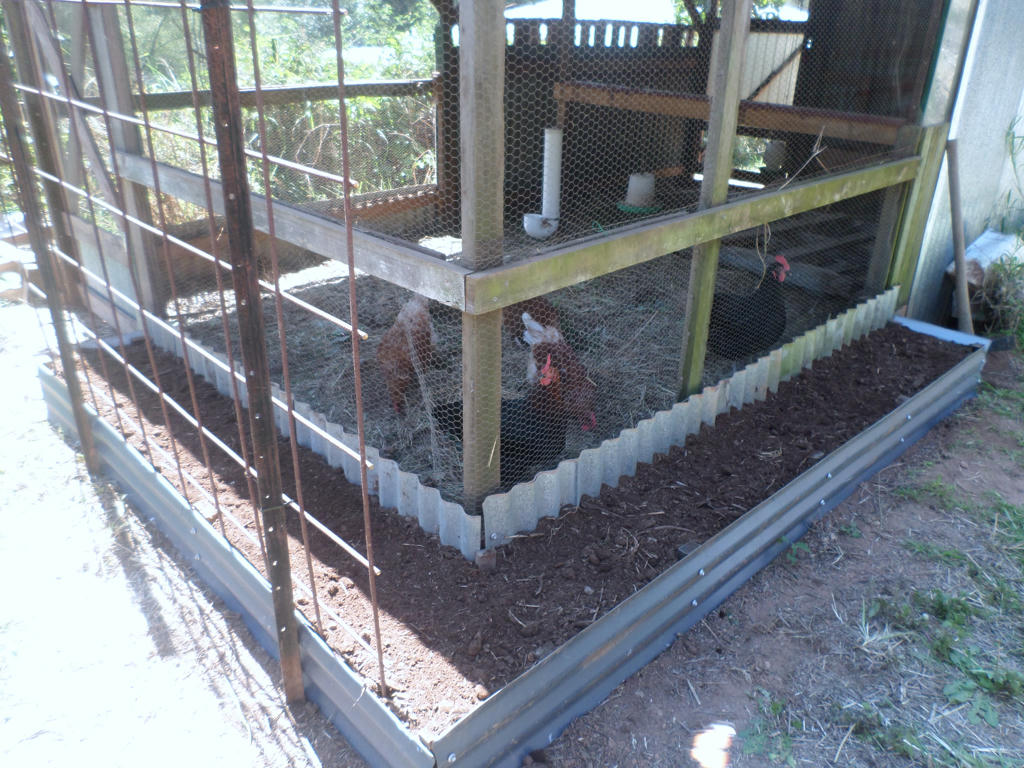

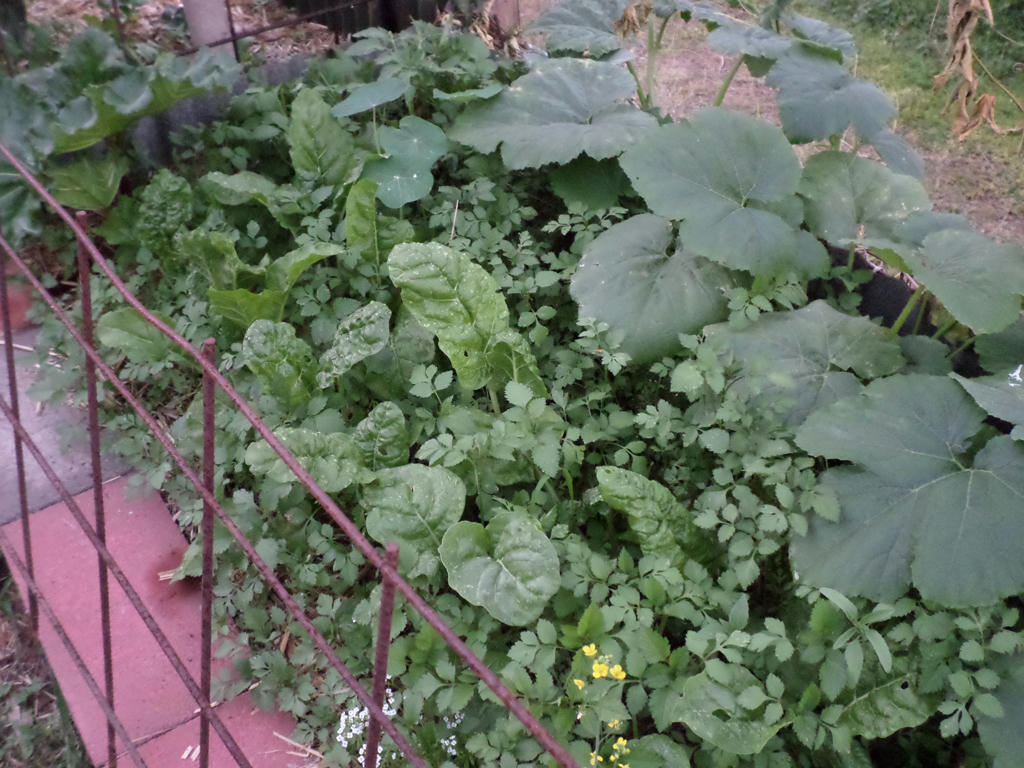
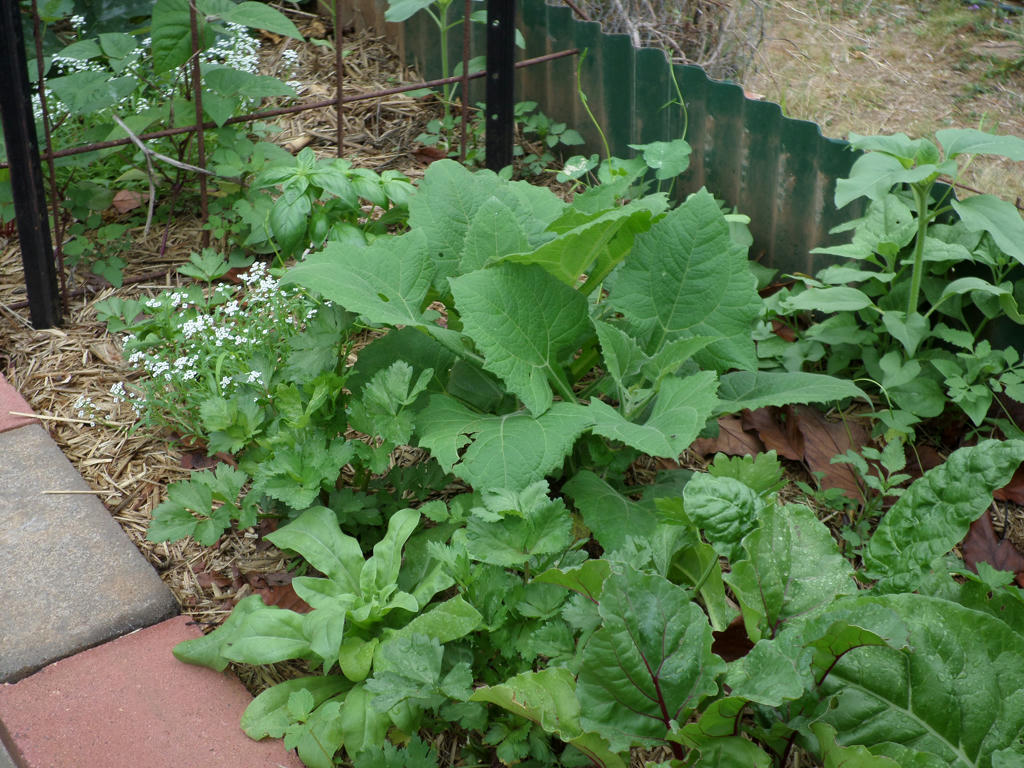
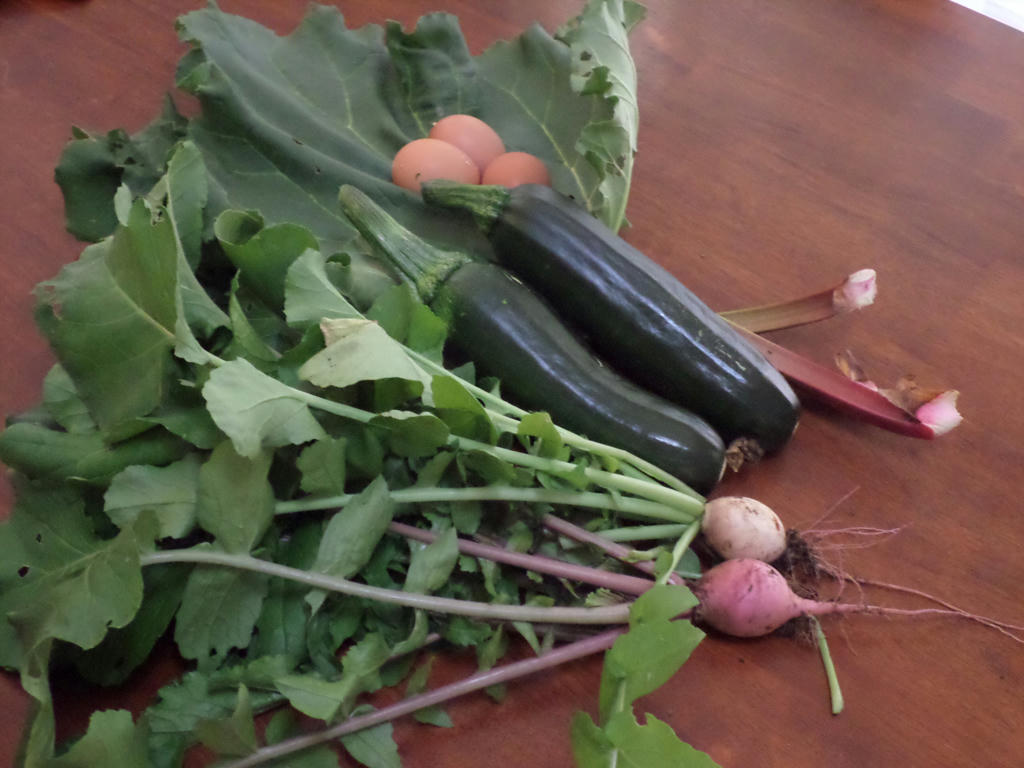






I was very discouraged by our harvests too, Chris. Our watersaver garden has sprung a leak so has just been used as a raised garden as it is such a big job to remove all the soil and find the leak but I guess it will get done sometime. The infrequent rain hasn't helped at all. I have brassicas in but our free ranging chook is getting around the wire I have been protecting them with. If she doesn't behave I will put her in with the other chooks and she will get pecked again. :-) I hope your wicking beds are successful.,
ReplyDeleteI hope you got your money's worth, before it sprung a leak. Its a shame when those things happen, because you have to start all over again. So long as it gave you a good innings at first though.
DeleteA trick I've learned with keeping chickens off new plants, is branches. I don't know if you have any laying around the place, but if you can find one with lots of little twigs, coming off the main branch, you just place it over the seedling. The chicken can't get at it that way.
I've had to do that recently, with some grass plants Matriarch found (our chicken). She was digging them out of the soft ground I took a long time to put in.
Cheeky chooks, hey. ;)
I got to the photo of the garden bed beside the chook run and said to myself...no...I would have had a line of wicking boxes there and what do I see a bit further down in the post....a line of wicking boxes! So pleased you've decided to try them. How did you set them up...what size/volume etc. I hope they do as well for you as they've done for me. Do you have water (a hose) nearby to water them? If not, try a 60 litre plastic rubbish bin with a hole drilled in the centre of the lid and turned upside down to catch rain during the winter (or fill with a hose), put a dipper inside and you can add water to the wicking boxes without the trouble of dragging the hose all the time from wherever. Let us know how they go. Oh, and a bit of mulch on the top will help.
ReplyDeleteThanks for the ideas. I think I remember the garbage bin one, from your blog. I've got a post to write about how we set up the wicking boxes. Its taken us a while to get everything together. It's great to finally have some working.
DeleteI've got some seeds germinating, between the seedlings at the moment, but I'll mulch once they break ground. :)
Just a question....do you really need those captcha thingummys? It's taken me 3 goes to get that last comment verified. ;-) Here we go again...
ReplyDeleteI must confess, you've stumped me with this question. As I've switched off word verification in my dashboard. I can't see it and it never appears for me.
DeleteWhen I signed out yesterday, and clicked on my blog again, I couldn't see a captcha verification box either. Did it only appear, when you pressed "publish" for your comment?
Please let me know if it keeps happening for you, and whether the verification box appears all the time, or just when you press "publish". Thanks. :)
Also, something I didn't know about verification boxes until later: you can keep clicking the circle shaped arrow (normally top, right-hand corner) until it provides text you can read. I hate verification boxes though, and its why mine is normally switched off. Something is amiss if its appearing for others though.
If anyone else reading this, sees a verification box when commenting, can you also let me know. Also, what account you're signing in with. Thanks. :)
I think it appears when I press 'publish' but I'll have to enter this comment and see what happens. The problem is in selecting the pictures it wants (e.g. 'select all with rivers', the pictures aren't that clear and just lately, it's been adding more pictures as I click the ones it wants. So it takes 3 or 4 attempts before it's happy and my comment goes through. Just had another thought and will try something and see what happens. I'm using my Wordpress account
DeleteTrying something different. Let's see what happens...
DeleteTried another browser...Chrome instead of Firefox...same problem. I type my comment...it asks for profile....I select Wordpress...it wants my login name...I type foodnstuff and click continue....nothing happens so I click publish....asks me to prove I'm not a robot...up comes all the pictures...when it's happy I'm not a robot I get a big tick and the comment goes up.
DeleteI wondered if it might be related to what account signs in. I know someone else who has a WP account, that said they were having problems commenting too. I can't remember how they fixed it though.
DeleteHave you tried "Reply as:" in OpenID mode? You basically click it (box under this comment box) and type your WP url address for your blog. See if that eliminates the problem?
DeleteOK trying that.
DeleteNope didn't work. Still captcha. I think Blogger just doesn't like Wordpress :-(
DeleteHi Chris, great work. I know what you mean with relying on the weather. My garden plans will fail or suceed depending on how much rain we get. We also use grey water on our garden, any possibility of you diverting washing machine or shower water? The wicking beds are a great idea, I have wanted yo try them and might start again at the new property with raised wicking beds.
ReplyDeleteIts always a gamble with the weather, isn't it, lol?
DeleteAll our grey water already goes to the garden, which keeps some plants alive, but not all. We have a lot of ground to cover. ;)
I look forward to seeing anything you set up on the new property. Our wicking boxes are our first try, and I imagine they'll morph several times again, until we find what works best. :)
I think you did fairly well considering that you had some challenges that were beyond your control. I beleive the kind of self sufficient garden you hope to have takes full time work no matter what methods you use though as I am sure you realize.
ReplyDeleteIt sure does involve a lot of work, but the pay off is greater when the weather is agreeable. ;)
DeleteBut its up to us, to make a workable solution around the weather, which means, more work, lol. Good thing I like to garden. :)